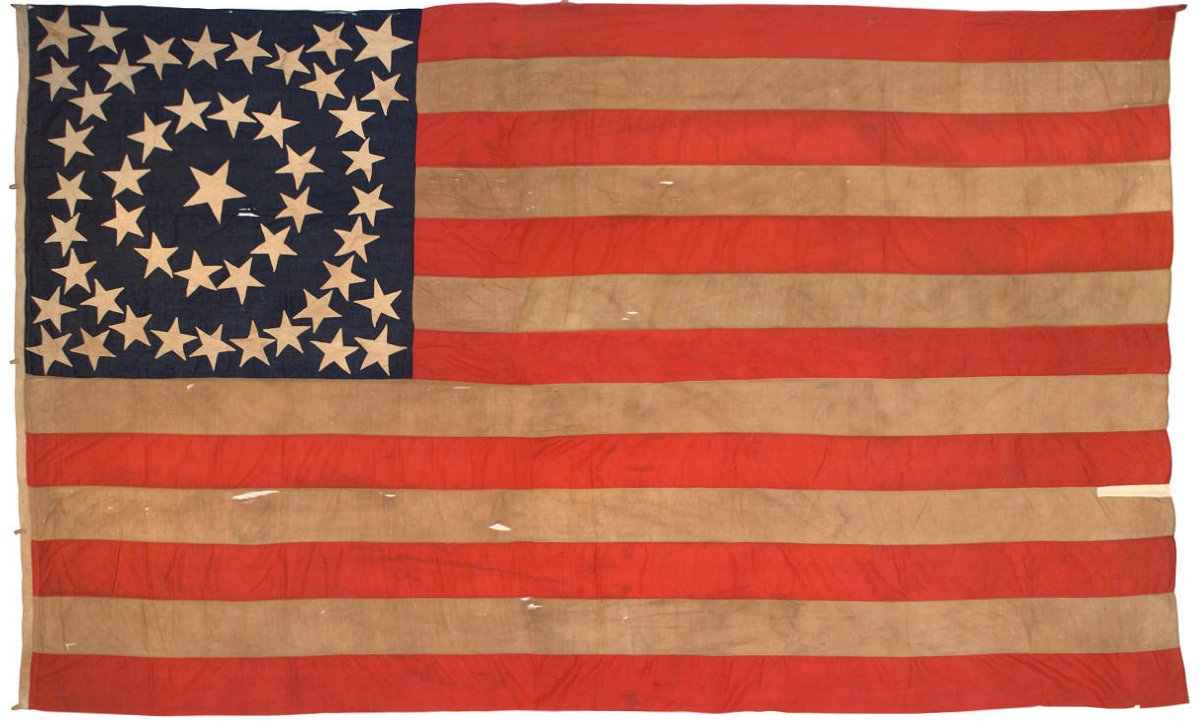
Medallion pattern flags
are some of the most exciting and visually captivating
flags in all of flag collecting. Each flag seems
to have its own unique traits, and it's precisely this
kind of variation that makes the pursuit of collecting
so exciting. The height of medallion flag
manufacture was the period of the American Centennial in
1876, but by the 1890's flags made in medallion
patterns, especially those made of pieced-and-sewn
construction, all but disappeared. That's one of
the reasons why this spectacular flag, in the 48 star
count, is so intriguing and rare. It dates to the
period circa 1912, and qualities of the flag, such as
the presence of three corner stars, presumably in order
to fit such a large number of stars on the flag, is a
rarity even among medallion type flags. The large
center star, larger corner stars, and tight wreaths
where the stars are nestled against each other are all
fantastic traits to see. The flag is made entirely
of cotton, and the stars of the flag are
single-appliqué, which means that the canton of the flag
was cut through, and a single piece of cotton fabric was
used to make each star. From the reverse, the
stars "peek through". The entire flag, including
the stars, is machine stitched. Machine stitching
single-appliqué stars could not have been an easy task,
and the precision and workmanship is exceptional.
All evidence, including close examination of the
stitching of the corner stars and comparison to the
stitching of the inner wreath stars, is that the canton
was made as designed, in a 48 star count. It's
tempting to try to place the flag in an earlier period
by speculating that the 12 corner stars were added later
(making the original flag 36 stars, which is also a high
point for medallion flag making). But this is not
the case. Upon close examination of the fabrics
and stitching it is evident that the entire flag is
original and as designed. Along with
IAS-00002, is one of just two 48 star medallion
flags that I am aware of, and it is a spectacular
rarity that pays homage to earlier examples of the type.
|

